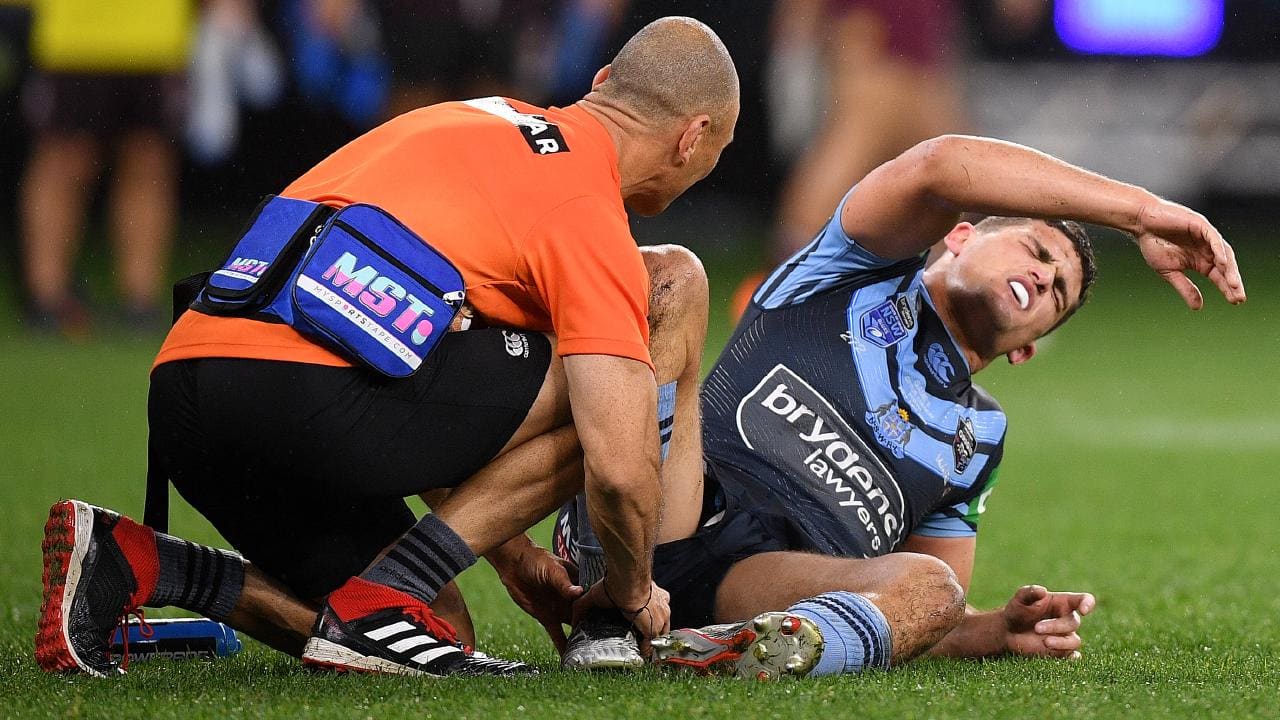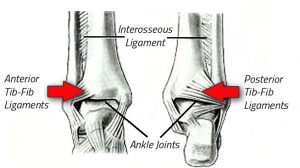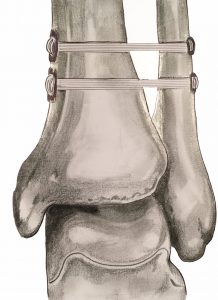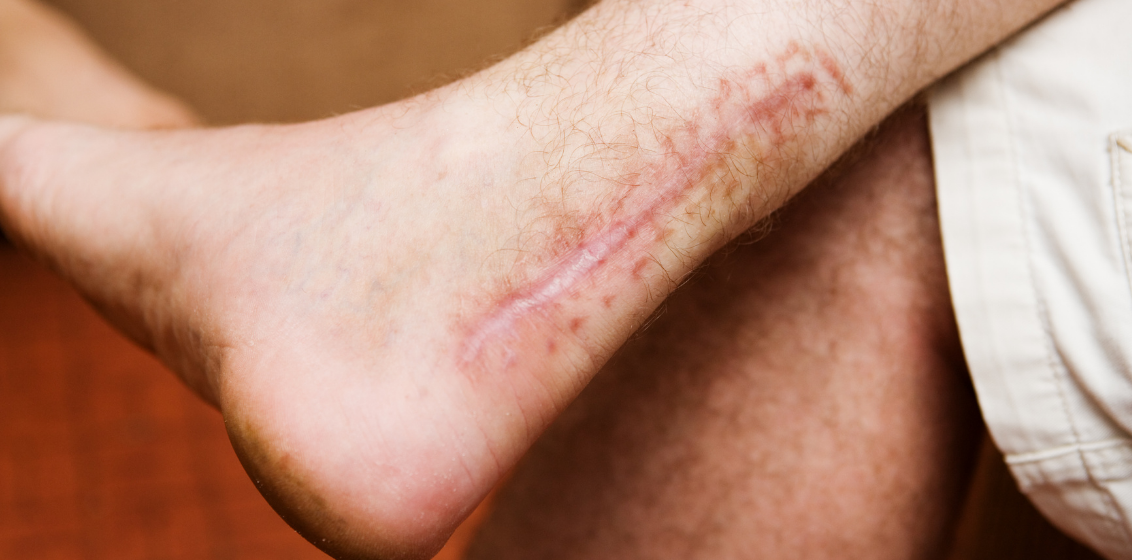What’s a syndesmosis sprain?

If you watch any sort of sport on TV, especially NRL, you will have heard of the “Syndesmosis Sprain” and seen players leaving the ground on crutches in a boot. Nathan Cleary missed the latest Origin game because of this injury. So what is it, and why is it a problem?
What is the syndesmosis?
This is the name given to the type of joint where two bones are lashed together side by side by ligaments. The end of the 2 bones in the lower leg (tibia and fibula) above the ankle is the most well-known of these type of joints in the human body.

Not just an ankle sprain?
The syndesmosis is injured in a similar way to a “normal” ankle sprain, except there is usually some rotation of the lower leg, or compression of the front of the ankle. This damages the ligaments between the front and back of the lower end of the shin bones. Pain is usually above the ankle bone, and the injury is often called a “high ankle sprain”, with little of the usual swelling and bruising common with a garden variety sprained ankle.
So what’s the big deal?
Instability between the two shin bones causes the bones to separate sideways under load, and the ankle joint below it to be compromised. Ongoing pain, instability and early arthritis are common with an undiagnosed syndesmosis sprain
Treatment starts with an early diagnosis. Skilled practitioners will hear parts of your story that alert us to a possible syndesmosis injury. Clinical tests using our hands will usually confirm the diagnosis and then Xray and MRI can tell us how severe the injury is and guide the best treatment plan. If we suspect a syndesmosis injury we will err on the side of caution and get more tests done as we don’t want to miss this one!
How is it treated?
These injuries basically take twice as long as a typical ankle sprain. Mild syndesmosis sprains need to be unloaded by using a boot and crutches for a period to get weight off the lower leg and allow the ligaments to heal. More severe injuries with marked instability require surgery using screws or, more recently, a double tightrope repair which allows earlier weight-bearing and return to sport. Either surgery requires 2 months or more for recovery.




